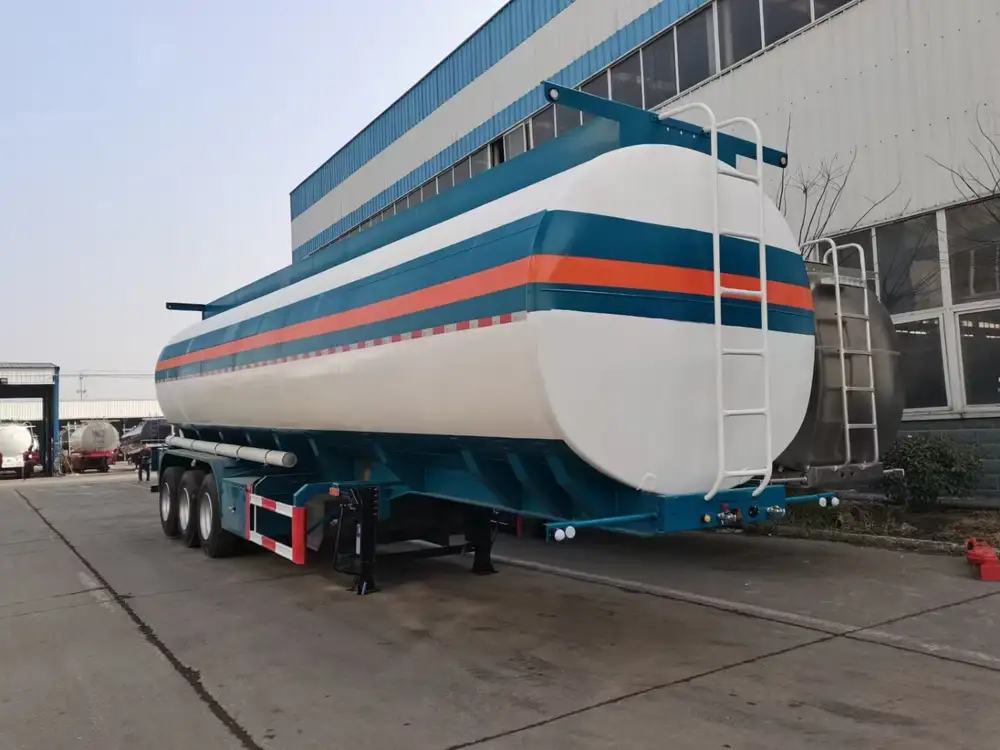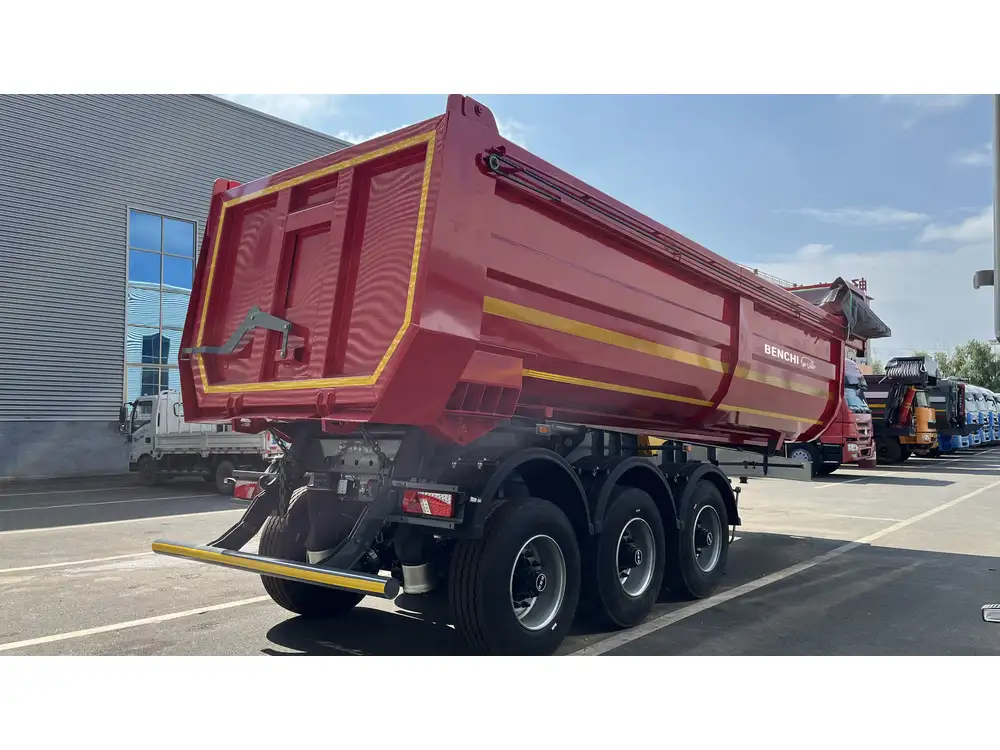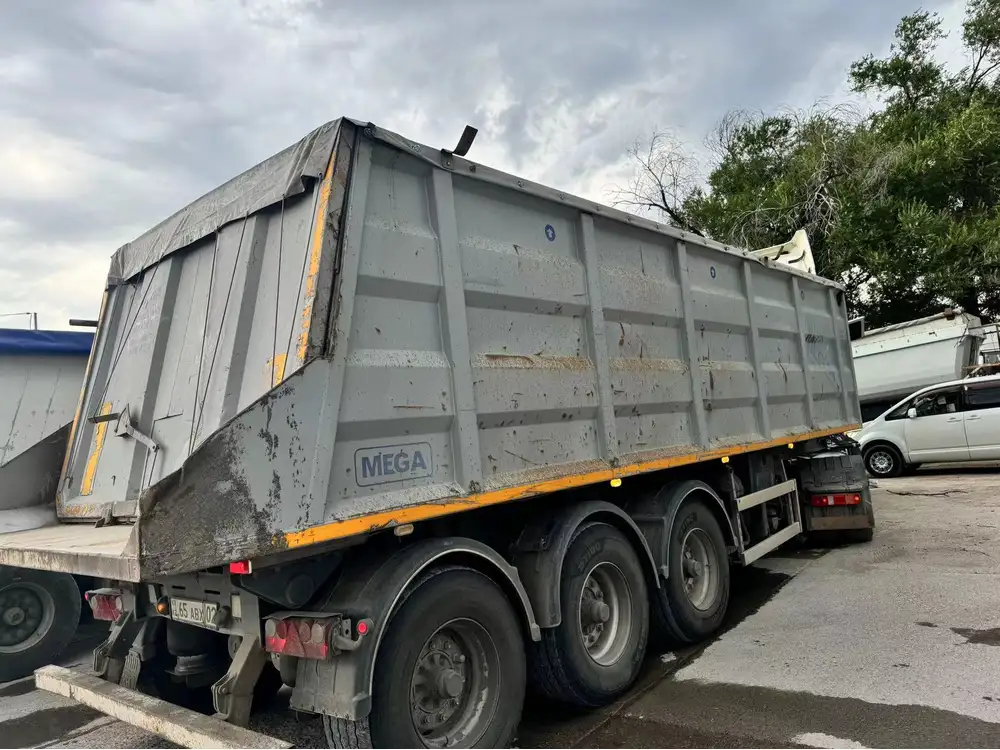Overview of Semi-Trailer Dimensions
When considering the semi-trailer, one of the most critical aspects that come into play is its height. Dimensions, including height, significantly influence the trailer’s performance, clearance, and legal compliance across various jurisdictions. Let’s delve deeply into the complexities surrounding semi-trailer height and explore the implications for manufacturers, transport companies, and fleet operators.
Standard Semi-Trailer Heights
| Trailer Type | Average Height (FT) | Uses |
|---|---|---|
| Standard Flatbed | 4.5 – 6.0 | Heavy equipment transport |
| Dry Van | 13.5 – 14.0 | General cargo, freight |
| Refrigerated Trailer | 13.5 – 14.0 | Perishable goods |
| Lowboy | 10.0 | Oversized loads, heavy machinery |
Key Takeaways:
- Most standard semi-trailers have an average height ranging from 13.5 to 14.0 feet.
- Specialty trailers, like lowboys, have reduced heights for specific cargo needs.

Factors Influencing Semi-Trailer Height
1. Regulatory Compliance
In the United States, the maximum legal height for a semi-trailer typically does not exceed 13.5 feet. However, this can vary by state. Some jurisdictions may impose stricter regulations while others allow for slight variations. Understanding the local regulations is critical for compliance and avoiding penalties.
Key Considerations:
- State Regulations: Verify local laws that govern trailer specifications.
- Federal Guidelines: Familiarize yourself with the Federal Motor Carrier Safety Administration (FMCSA) standards.

2. Trailer Purpose
Different trailer types are designed for specific uses, which directly impacts their height. For instance, refrigerated trailers often have insulated roofs to maintain temperature, influencing their overall height.
Use Cases:
- Transporting Perishable Goods: Requires insulated design, maintaining standard heights.
- Hauling Heavy Equipment: Flatbed trailers may have varying heights based on load specifics.
Height and Performance: A Trade-off Analysis

Stability vs. Maneuverability
The height of the semi-trailer affects both stability and maneuverability. As trailer height increases, so do challenges in maintaining stability, especially during turns or at high speeds. Higher trailers may also suffer from increased wind resistance, which can affect fuel efficiency.
| Height | Stability | Maneuverability | Wind Resistance |
|---|---|---|---|
| Low (below 13.0 FT) | High | High | Low |
| Standard (13.5 – 14.0 FT) | Moderate | Moderate | Higher |
| High (> 14.0 FT) | Low | Low | Highest |
Load Distribution
When transporting cargo, the height of the semi-trailer can affect load distribution. An improperly balanced load, especially in taller trailers, can compromise safety and lead to accidents.
Strategies for Optimal Load Management:
- Utilize load planning software.
- Conduct regular inspections and adjustments of load height.

Innovations and Trends in Semi-Trailer Design
1. Adjustable Trailer Heights
With the advent of advanced engineering technology, adjustable height trailers are gaining traction. These innovative designs allow operators to modify trailer height based on load requirements and bridge clearance, thereby enhancing safety and compliance.
2. Aerodynamic Enhancements
Manufacturers are continually designing trailers with aerodynamics in mind, aiming to lower the overall height of structures such as fairings while optimizing fuel efficiency. Lower profiles can minimize drag, ultimately saving on fuel costs.

3. Smart Sensing Technology
Incorporating smart sensors can help operators monitor and adjust trailer height dynamically. Technology solutions can alert drivers about potential height violations and critical parameters, ensuring compliance and safety.
Height Management Strategies for Operators
1. Regular Height Assessments
Conduct regular inspections and assessments of semi-trailer height to ensure compliance with local regulations and safety standards. Keeping accurate records will help prevent legal issues and support fleet management.

2. Training for Operators
Educating truck drivers and operators about the importance of understanding height restrictions can considerably reduce risks associated with height violations. Forklift operators or unloading staff should also be educated to manage height safely when loading or unloading trailers.
3. Utilizing GPS Technology
Employing GPS technology can provide real-time data about road restrictions and bridge heights, allowing drivers to plan routes that accommodate their trailer heights effectively.
The Future of Semi-Trailer Height Regulations
As vehicle technology evolves, so too will the regulations governing semi-trailer heights. Emerging technologies, such as electric trucks and alternative fuels, may lead to shifts in production and height specification standards. Additionally, increasing attention to sustainability may pave the way for new dimensions focused on efficiency.

Anticipated Regulatory Changes:
- Future regulations are likely to emphasize standardization and sustainability.
- Advances in materials may reduce the need for certain height specifications.
Conclusion: Key Takeaways for Manufacturers and Operators
Understanding the intricacies surrounding semi-trailer height can significantly impact your operation’s success. From ensuring compliance with regulatory standards to selecting the appropriate trailer type based on your cargo needs, awareness of these factors ensures operational efficiency.
- Height is a critical factor in determining trailer performance and compliance.
- Dynamic adjustments to trailer design can offer enhanced functionality and safety.
- Investing in training and technology pays dividends in compliance and efficiency.
In the competitive space of semi-trailer manufacturing, manufacturers must remain agile, informed, and proactive in adapting to regulatory changes, emerging technologies, and market trends. By doing so, they can leverage the complexities of semi-trailer height to improve product offerings and ultimately foster greater safety and efficiency in transportation.
This comprehensive exploration not only addresses the specific question about the height of semi-trailers but also encapsulates broader aspects integral to semi-trailer design and operation, thereby aligning with user search intent more effectively.



